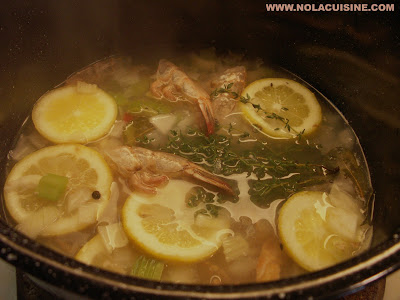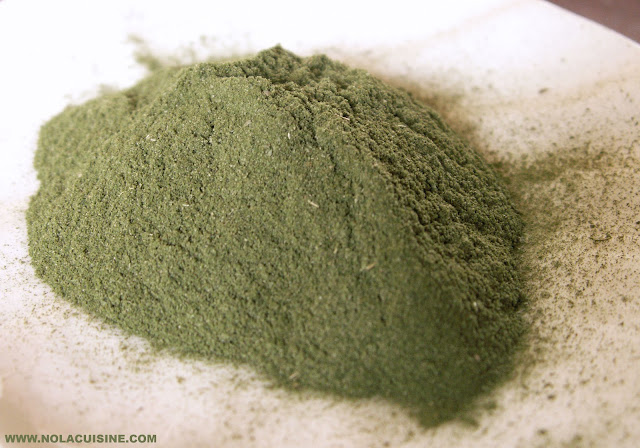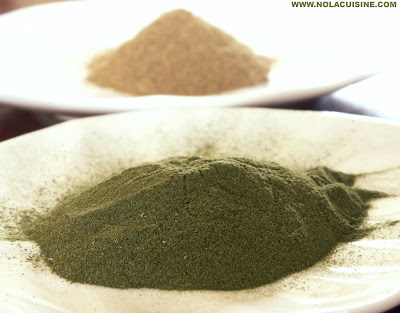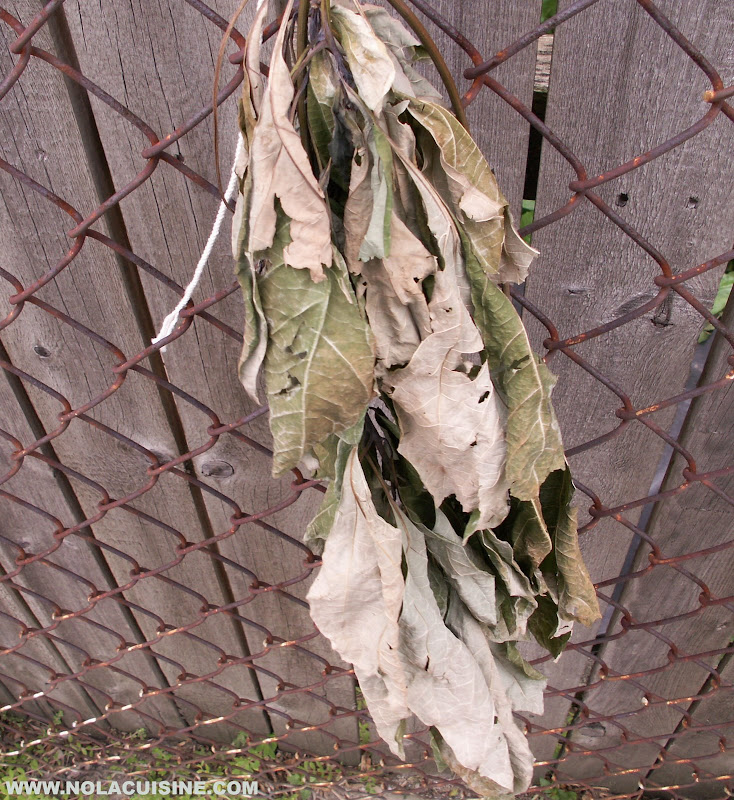 |
| From Nola Cuisine |
As much as I love the spring Crawfish Boil, I always look forward to having some leftover Crawfish tail meat to play with for later use. After my spring boil I had a fair amount of Crawfish leftover so I sat down with a cold beer after our guests had left, relaxed and picked all of the tail meat as well as the fat from the heads.
This is one of those tasks that is actually a very therapeutic process for me, like peeling shrimp, or making roux, where you can just sit or stand there and enjoy the silence and repetition of the task at hand, let your brain go and think about whatever; kind of like sleep without the bad dreams.
 |
| From Nola Cuisine |
I ended up with about 2 pounds of tail meat, the perfect amount for a nice batch of Crawfish Etouffee. I made a batch of Crawfish Stock from the shells and vacuum sealed the tails and fat for later use.
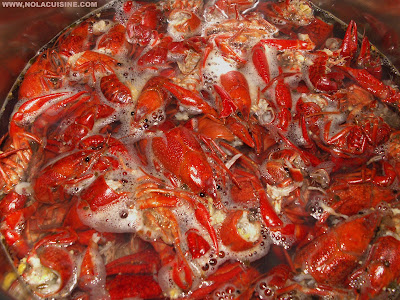 |
| From Nola Cuisine |
 |
| From Nola Cuisine |
Which brings me to lunch today.
The smell of Crawfish Etouffee or Shrimp Etouffee (my recipe), makes me more nostalgic for Louisiana than any other dish I can think of, even above Gumbo and Red Beans. I arrived home from work tonight to sit down and write this post and was met with the aroma of Etouffee still hanging out in the house, heavenly.
The real key to this recipe as with my Shrimp Etouffee, is the stock. Seafood stocks are simple and require a very short cooking time yielding great results.
This recipe leans a little more to the country than my Shrimp Etouffee Recipe, although they are similar, neither shy with the butter, but this one doesn’t use tomatoes. I hope you enjoy it!
The recipe:
 |
| From Nola Cuisine |
Crawfish Etouffee Recipe
2 Tbsp Creole Seasoning **Please Note! This recipe is based on my homemade Creole Seasoning! If you use Tony C’s or any others it will turn out much too Salty!!!!)
4 Tbsp Unsalted Butter
1 1/2 Cup Onion, Finely Chopped
1/4 Cup Celery, Finely Chopped
1/2 Cup Bell Pepper, Finely Chopped
2 lbs Crawfish Tail meat
1/4 Cup Flour
1 1/2 to 2 Cups Crawfish Stock
1/4 Cup Minced Garlic
2 Tbsp Fresh Thyme Leaves, chopped
2 tsp Worcestershire Sauce
1 tsp Hot Sauce (I like Crystal or Louisiana Gold)
1/2 Cup Green Onions, thinly sliced
2 Tbsp Italian Parsley, minced
3 Tbsp Unsalted Butter
Diamond Crystal Kosher Salt & Freshly Ground Black Pepper to taste
1 Tbsp fresh Lemon Juice
1 Recipe Creole Boiled Rice
Melt the butter in a large cast iron skillet, add the onions, bell pepper, celery, and 1 Tablespoon of the Creole seasoning, saute until translucent. Add the Crawfish tail meat, the remaining Creole seasoning and saute until the tails let off some of their liquid, cook for 3-5 minutes more. Add the flour, stirring constantly for about 3-5 minutes.
Add a small amount of the crawfish stock, stir well to form a paste, add the remaining stock gradually, whisking constantly. Bring to a boil, then reduce to a simmer. You may need a little more stock, but the end result should be the consistency of a gravy, not too thick, not too thin.
Add the garlic, Thyme, Worcestershire, and hot sauce, a little salt, black pepper. Simmer for 20-30 minutes.
Add the green onions and parsley, simmer for 5-10 minutes more.
Stir in the 3 Tbsp butter, lemon juice, and adjust the seasonings to taste.
Serve over Creole Boiled Rice.
Serves 4 as an Appetizer or 2 as a large entree.
 |
| From Nola Cuisine |
Related Posts:
Shrimp Etouffee Recipe
Crawfish Boil Recipe
Crawfish Stock Recipe
Live Louisiana Crawfish Recipe
Shrimp Stock Recipe
Shrimp Creole Recipe
Be sure and check out my ever growing Index of Creole & Cajun Recipes which provides links to all of the recipes featured on this site!


